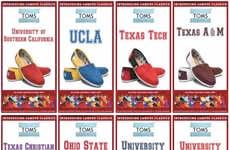



Consumers categorize themselves into behavioral tribes
Implications - For years, people have followed horoscopes, visited psychics and sought psychological help in order to better understand themselves. This thirst for self awareness has expanded into modern pop culture. In 2013, this means endless graphics and blogs dedicated to helping consumers assign themselves a stereotype, making it easier for marketers and business leaders to understand and entice them.
Trend Themes
1. Self-induced Stereotyping - Consumers assign themselves a stereotype, making it easier for marketers and business leaders to understand and entice them.
2. Humorous Content - Consumers enjoy products with an element of sarcasm because it provides them with humorous diversions, which also acts as a source of tension relief. Corporations may consider using more humorous content in promotional campaigns in order to disseminate information while garnering mass consumer attention.
3. Stereotyping for Personal Objects - Infographics that stereotype a person or consumer based on personal objects they own.
Industry Implications
1. Marketing - Marketing professionals can use self-induced stereotyping to create more targeted campaigns that appeal to specific consumer groups.
2. Content Creation - Content creators can use humorous content in their productions to increase viewer engagement and provide a relief from tension.
3. Data Analytics - Data analysts can study personal objects and use the data to create profiles and gain insights on consumers based on their possessions.
6 Featured, 53 Examples:
736,802 Total Clicks
Date Range:
Sep 11 — Feb 13
Trending:
Hot
Consumer Insight Topics:























































